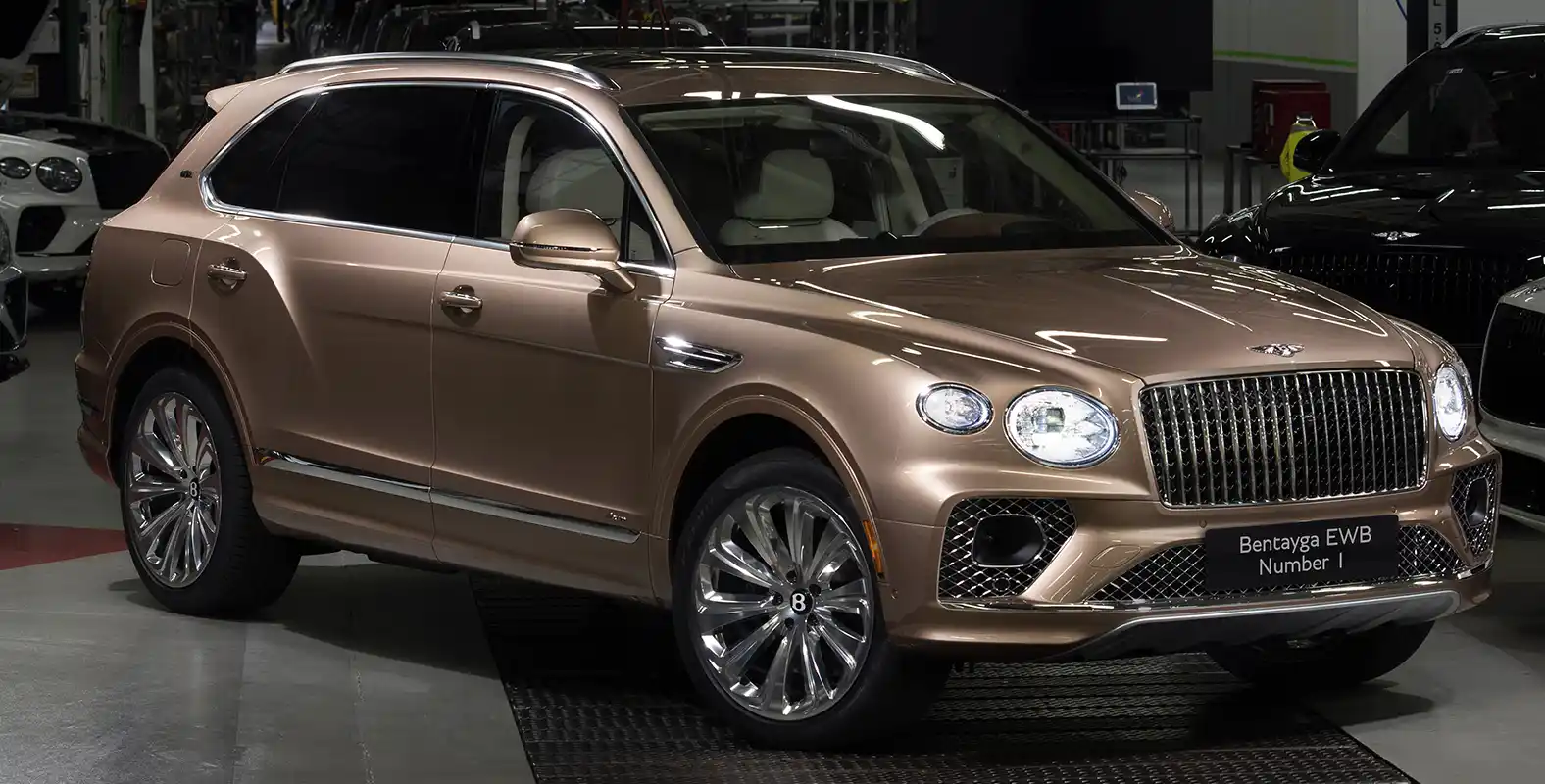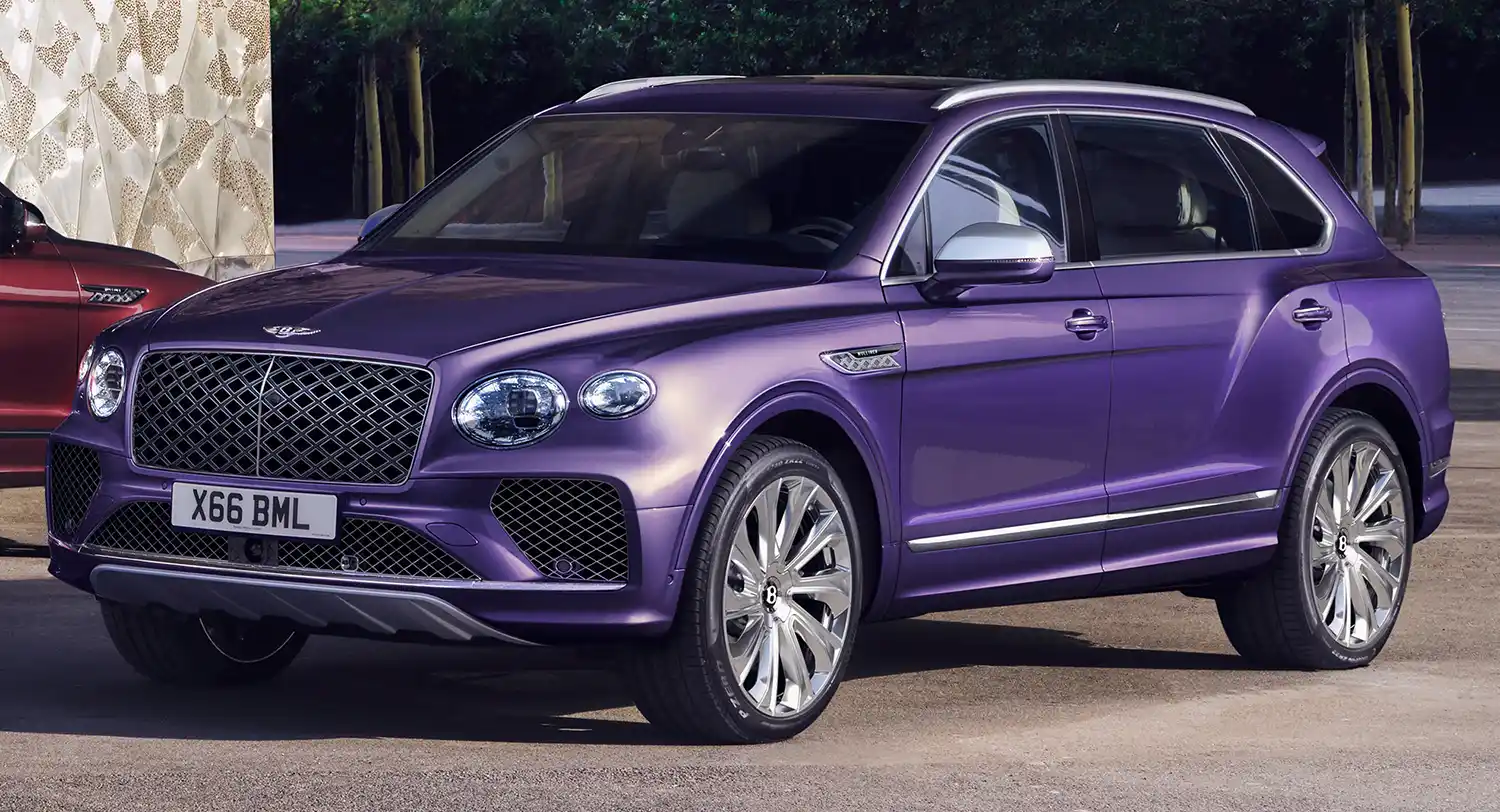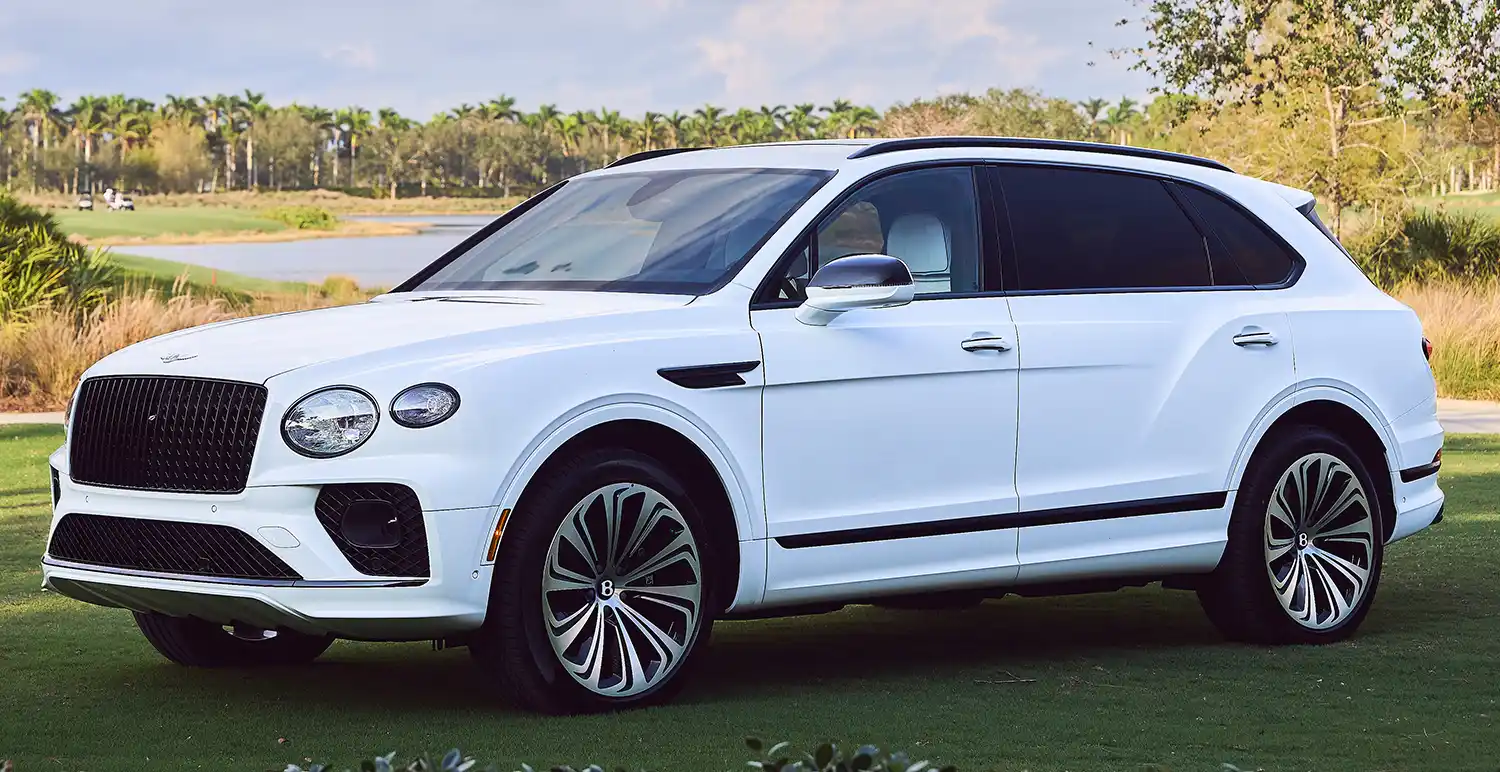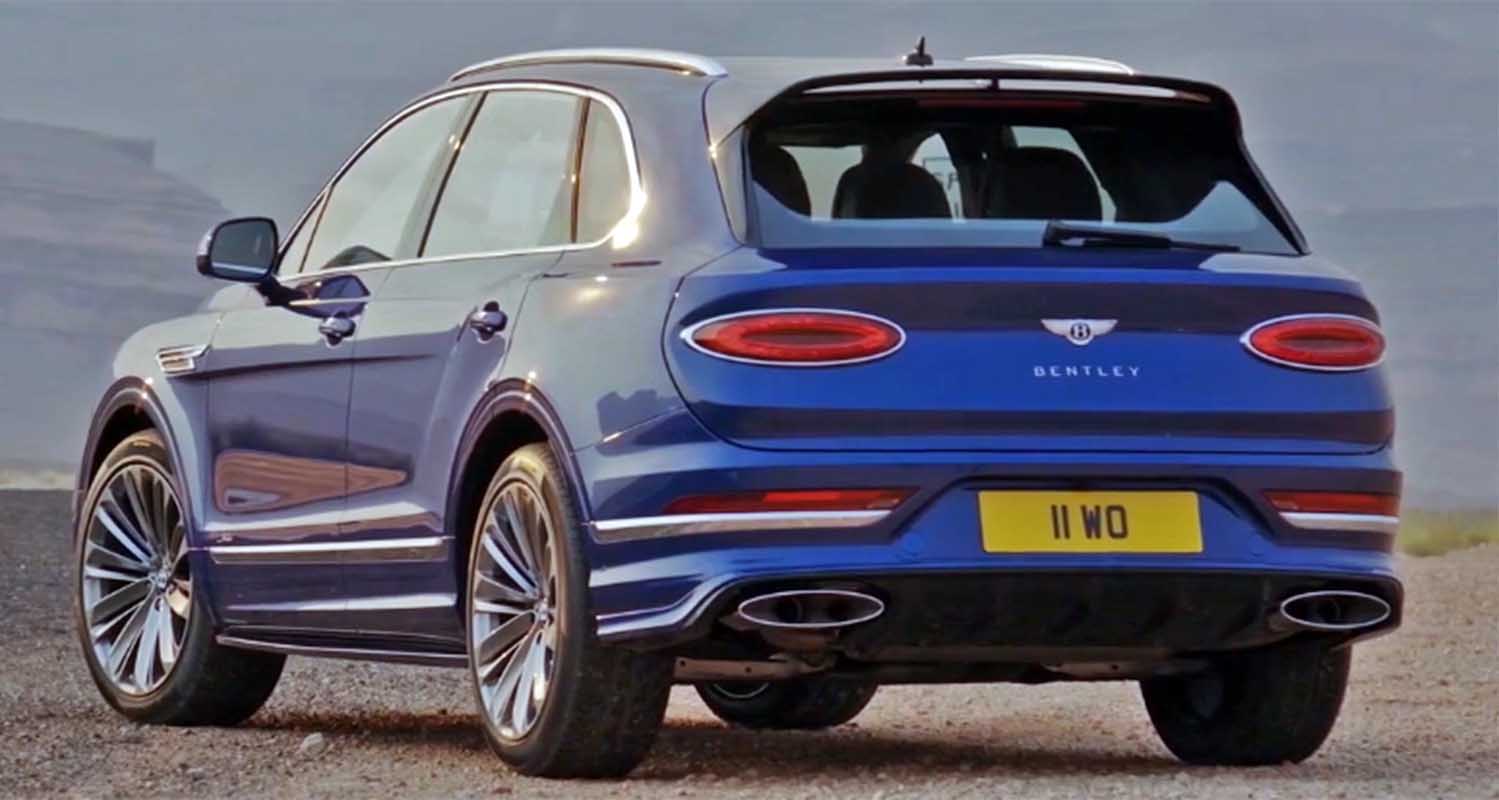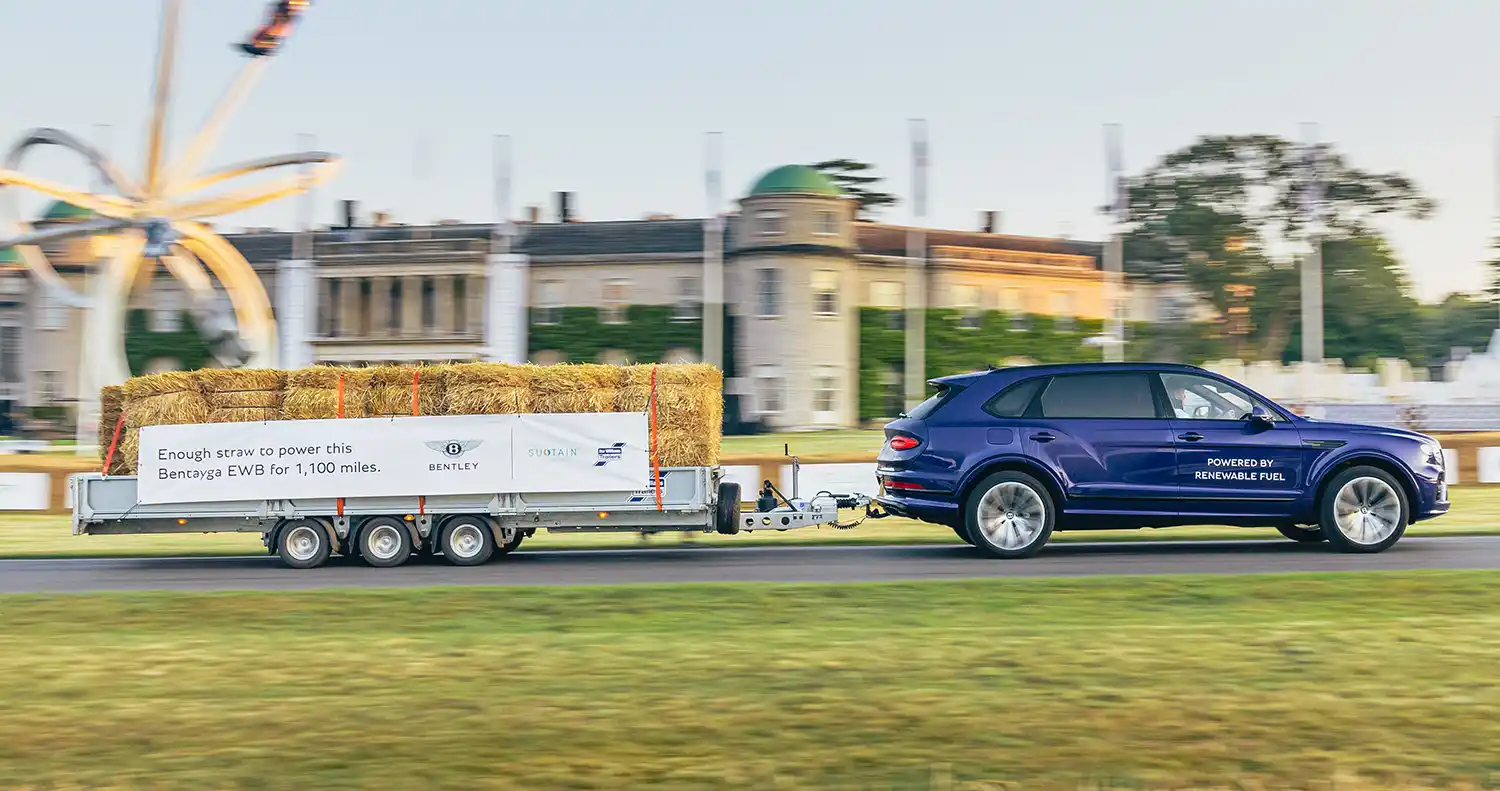
Bentley’s renewably-powered showcase at Goodwood Festival of Speed was opened in dramatic fashion this morning, with the announcement of a new, albeit unofficial, hillclimb record – fastest car with a trailer. A Bentayga EWB, Bentley’s newest flagship, completed the hill climb at speed in just 1 minute 21 seconds – impressive enough, but made even more surprising by the fact it was towing 2.5 tonnes of straw in a specially-prepared Ifor Williams trailer.
Not only has the run set a new Goodwood record – fastest time for a car and trailer – the unofficial run of 1 minute 21 seconds was completed on second-generation renewable fuel, made from agricultural waste straw. As part of Bentley’s ongoing trails into sustainable fuel, all modern Bentleys running on the hillclimb at the Festival of Speed over the next four days are using renewable fuel, meaning an 85 per cent reduction in carbon emissions on a well-to-wheels basis.
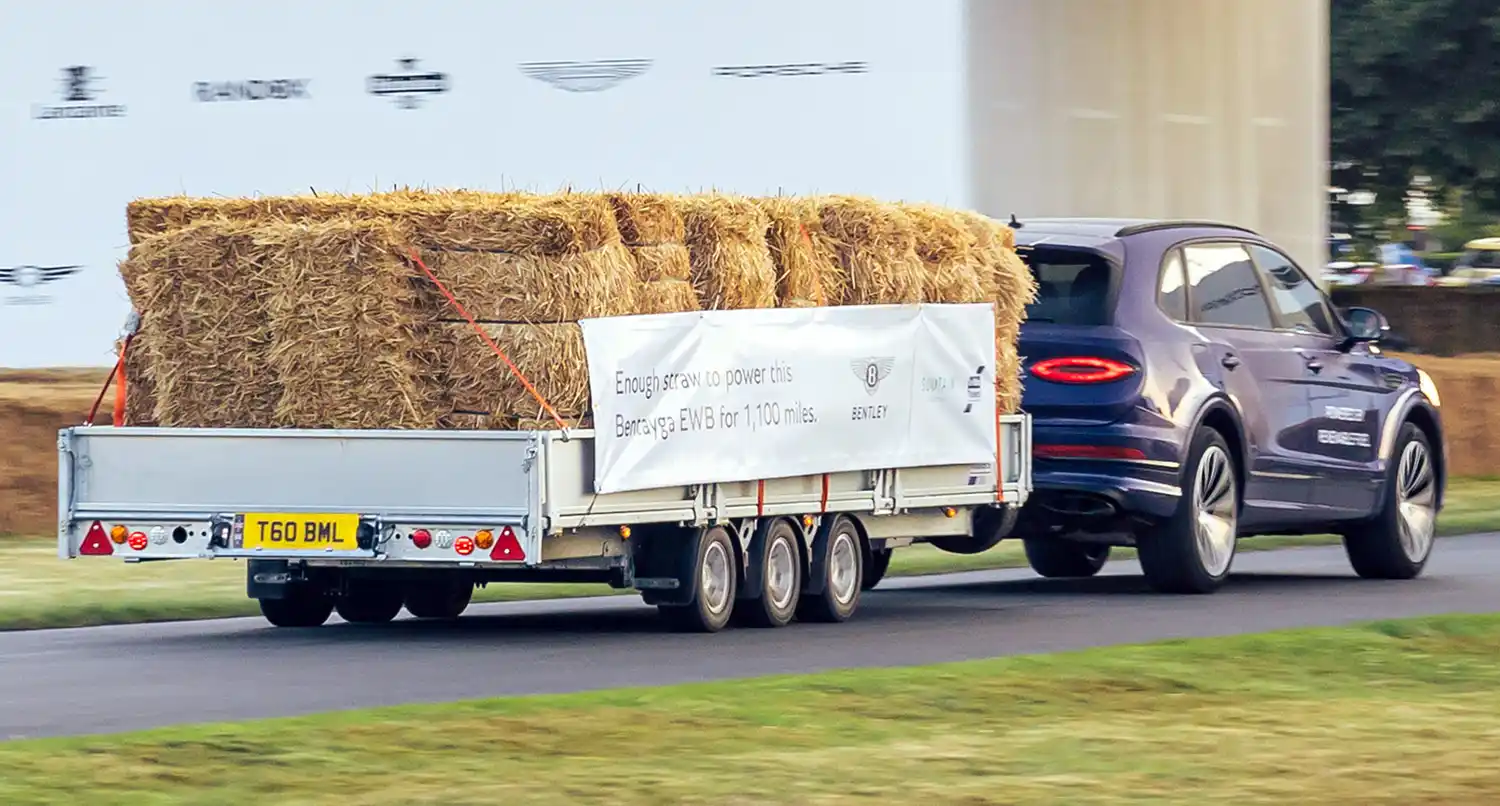
For safety reasons, the run was completed ahead of the start of the Festival of Speed, during the build phase of the event, meaning the record time is not official.
The 2.5 tonnes of straw hauled to the top of hill is enough to create 1,100 miles-worth of fuel that the Bentayga EWB and indeed all Bentleys can run on without modification. The second-generation biofuel conforms to the global EN228 standard for gasoline, meaning it’s a straightforward replacement for normal pump fuel.
The Ifor Williams trailer only needed light modifications for the run, including a bolted frame to secure the straw load and increased tyre pressures. The stability and performance of the car and trailer were tested on three separate occasions, at both Anglesey Circuit and the MIRA proving ground.
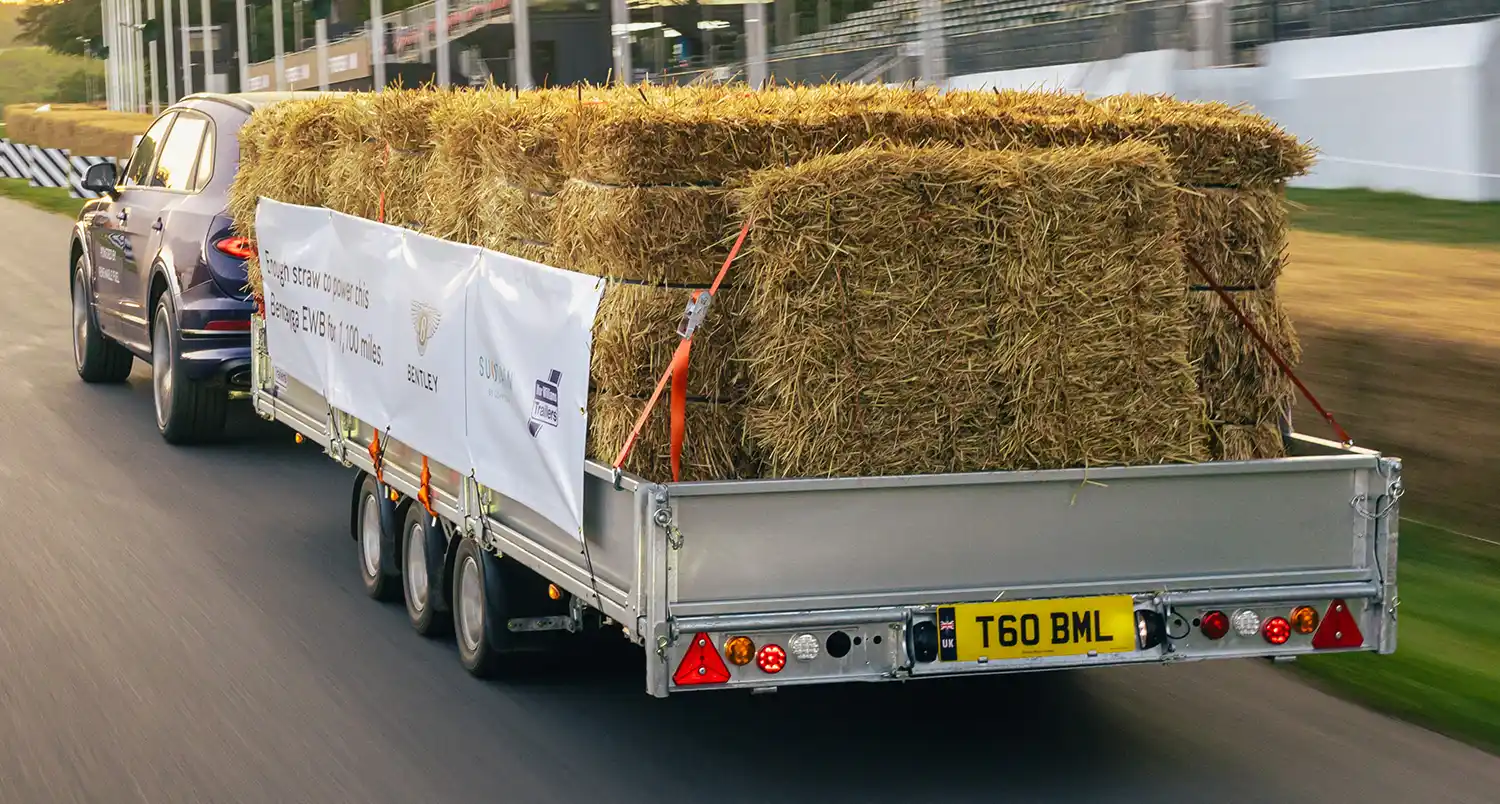
Following its successful ascent, both Bentayga EWB and its trailer are on display in the Cathedral Paddock at the Festival of Speed, while a short film covering the run will be shown during the event.
100 per cent Renewable Second-Generation Biofuel
Unlike first-generation biofuels, which are made from food crops grown on arable land, second-generation biofuels use waste products, including agriculture and forestry waste and food industry by-products. During the production process waste biomass is broken down using fermentation, leading to the creation of ethanol. Dehydration of the ethanol converts it to ethylene, which can then be transformed into gasoline through the process of oligomerisation – chaining short hydrocarbon molecules together to produce longer, more energy-dense ones. The fuel produced is 100 per cent renewable and delivers an estimated 85 per cent reduction in CO2 impact compared with conventional gasoline. By using waste materials that would otherwise be disposed of, second-generation biofuel avoids the ‘food versus fuel’ dilemma associated with first-generation biofuels.
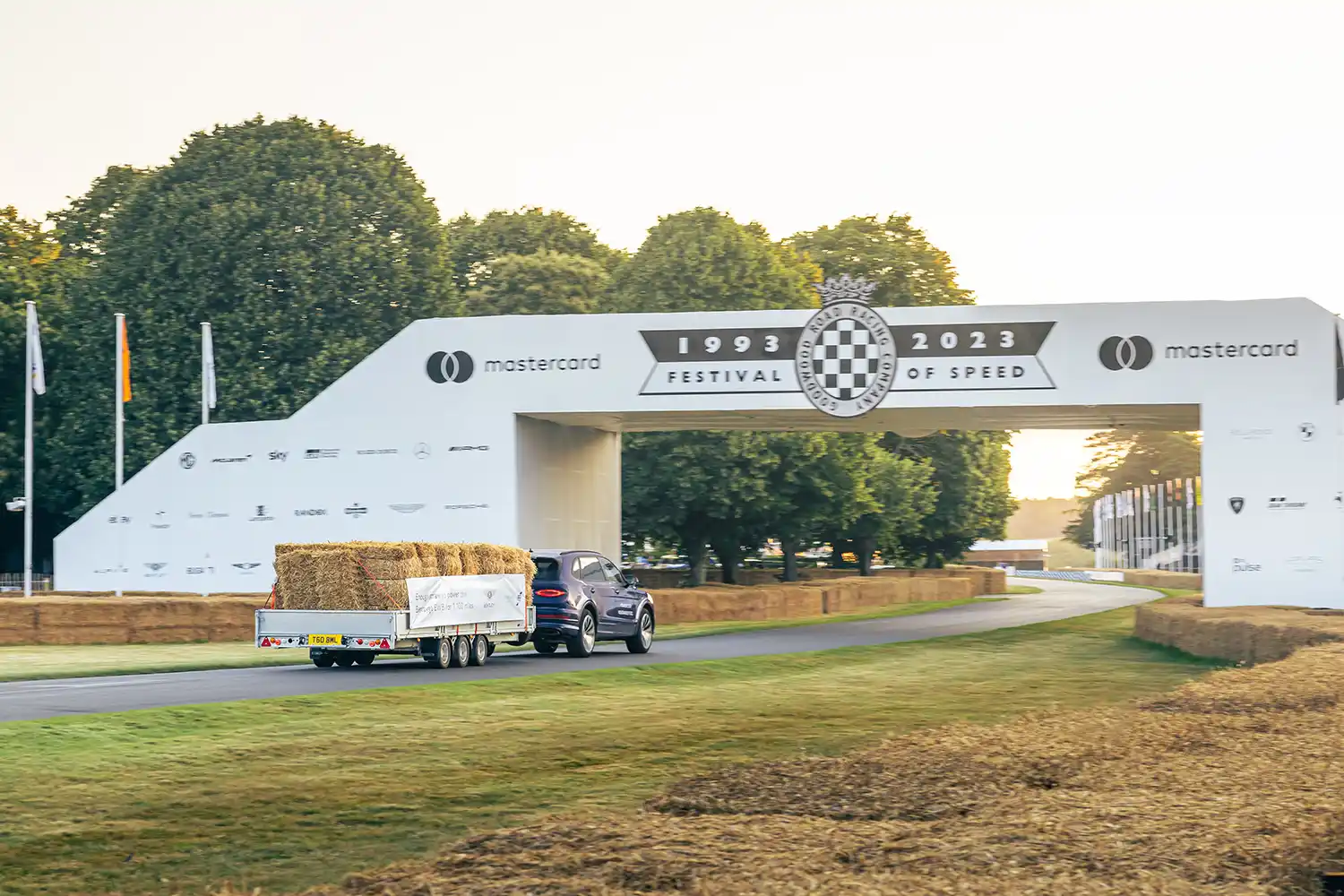
Confidence-Inspiring Handling
The new Bentayga EWB has won critical acclaim for its dynamic abilities, with its performance, ride and handling all unaffected by the lengthening of its wheelbase by 180 mm – thanks to the addition of rear-wheel steering. The strecth is also within the rear door, meaning an extended rear cabin of exceptional space and luxury but at no compromise to the Bentayga EWB’s promise of remaining a driver’s car.
The Bentayga EWB continues this ethos with the inclusion of Electronic All Wheel Steering and Bentley Dynamic Ride as standard.
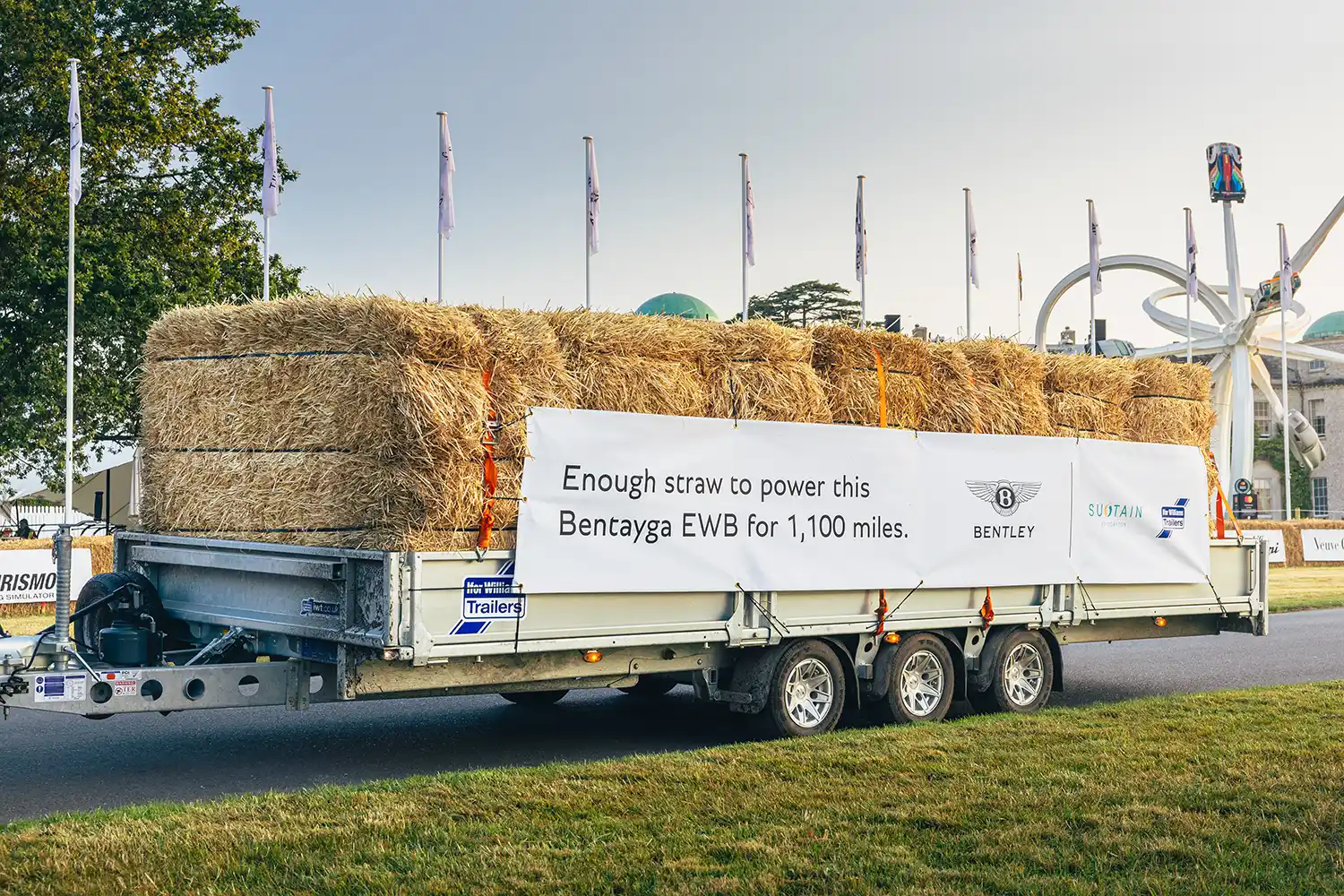
Electronic All Wheel Steering was first introduced by Bentley on the new Flying Spur. It provides two highly desirable benefits and ensures no compromise between high-speed confidence and low speed convenience.
At fast, highway speeds the system makes small adjustments to the direction of travel of the rear wheels, in tandem with the direct steering inputs from the driver to the front wheels. This increases high-speed stability – making overtaking and lane changing more assured – and improves handling when driving through sweeping bends.
At low speeds, the All Wheel Steering has the effect of ‘shortening’ the wheelbase, reducing the turning circle, and increasing agility in tight urban environments making parking noticeably easier. This is achieved by steering the rear wheels in the opposite direction to the front wheels. The system actually provides a turning circle which is smaller than that of the standard wheelbase Bentayga by 7 per cent.
Bentley Dynamic Ride – the world’s first electric active roll control technology – has been further enhanced since the original Bentayga by a 20 mm track increase at the rear, reducing steering effort and improving response linearity. Bentley Dynamic Ride instantly counteracts lateral rolling forces when cornering and ensures maximum tyre contact to deliver class-leading cabin stability, comfort and handling.
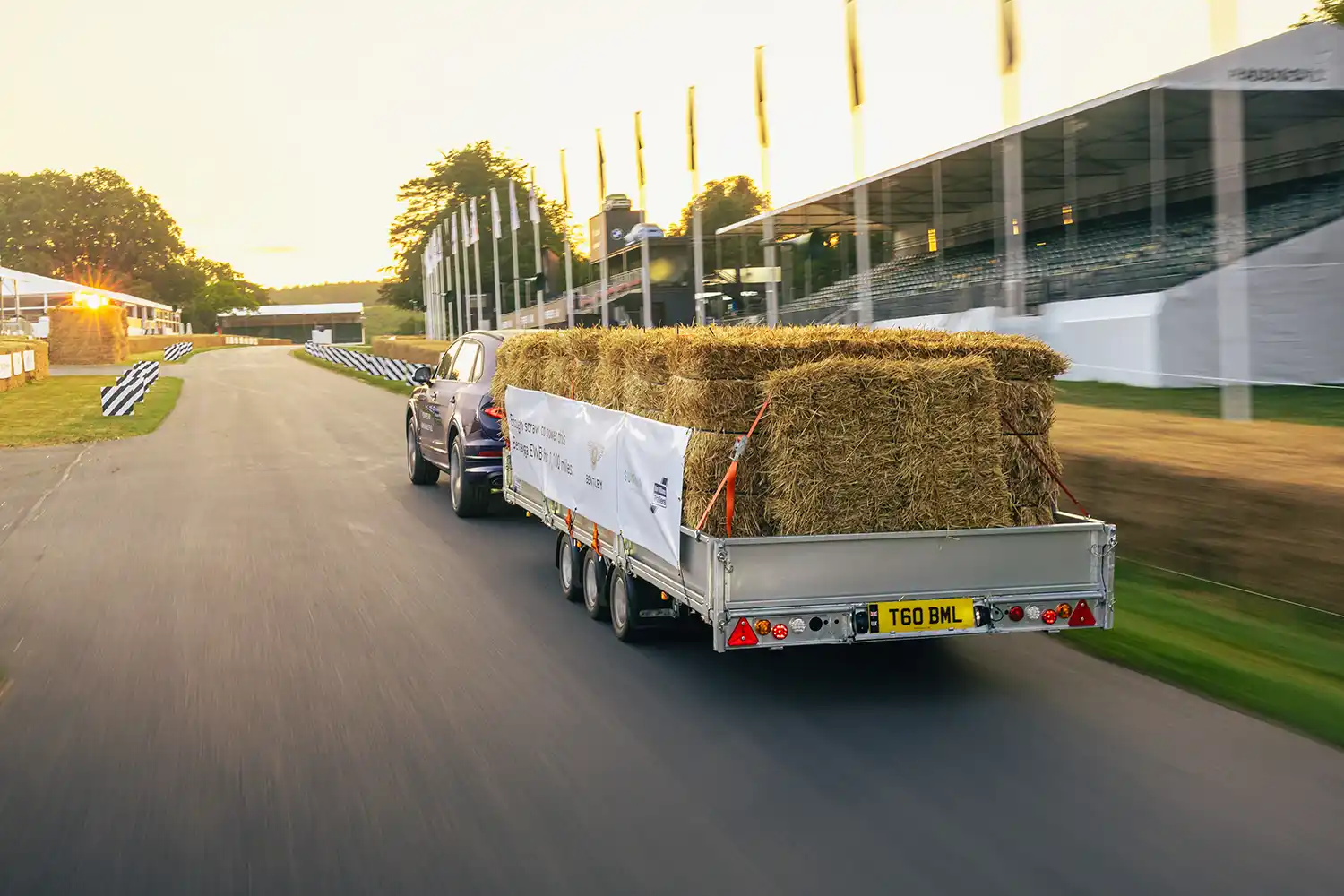
Effortless Power Delivery
The Bentayga EWB is powered by Bentley’s proven 4.0-litre, 32-valve dual twin-scroll turbocharged V8 petrol engine, which combines immense power with impressive fuel economy. Mated to an eight-speed automatic gearbox, the V8 offers supercar performance, developing 542 bhp (550 PS) and 568 lb.ft (770 Nm) of torque, resulting in a top speed of 180 mph (290 km/h) and 0-60 mph in 4.5 seconds (100 km/h in 4.6 seconds).
Bentley’s 4.0-litre V8 engine is a thoroughly modern engine, with a block cast from high strength aluminium and with twin-scroll turbochargers and primary catalytic convertors positioned in the V of the engine.
A key feature of the twin-scroll turbochargers are the two separate, parallel flow channels in the turbine housing specifically guiding the exhaust gases to the vanes of the turbine wheel, resulting in high torque being available at low speeds. The turbochargers are located inside the V of the engine, minimising the distance the exhaust gases travel from the engine to the turbochargers which can operate at 176,000 rpm and generate up to 1.6 bar of boost pressure.
Fuel injectors and spark plugs have been centralised within each combustion chamber to ensure optimal spray patterns and combustion paths, and the camshafts are variable by up to 50 degrees, with the ability to deactivate half of the cylinders when the engine is running at part load – turning it into a perfectly balanced V4.
The design concept of the V8 engine has ensured the engine delivers a high level of power and torque, whilst still achieving lower emissions and the best possible efficiency. The compact V configuration uses a five bearing crankshaft, harnessing the power from the lightweight pistons. To minimise frictional power losses, the crankshaft also directly drives the water pump and timing chains via an intermediate shaft to improve efficiency.
An exactly square engine, matching the stroke length to the 86 mm cylinder bore, gives the best balance between power and torque, and with the help of twin-scroll turbochargers the engine develops over 135 bhp per litre. The V8 produces a peak power of 550 PS (542 bhp, 404 kW), with maximum torque of 770 Nm at 2000 rpm, maintaining this as a flat plateau through to 4500 rpm.




